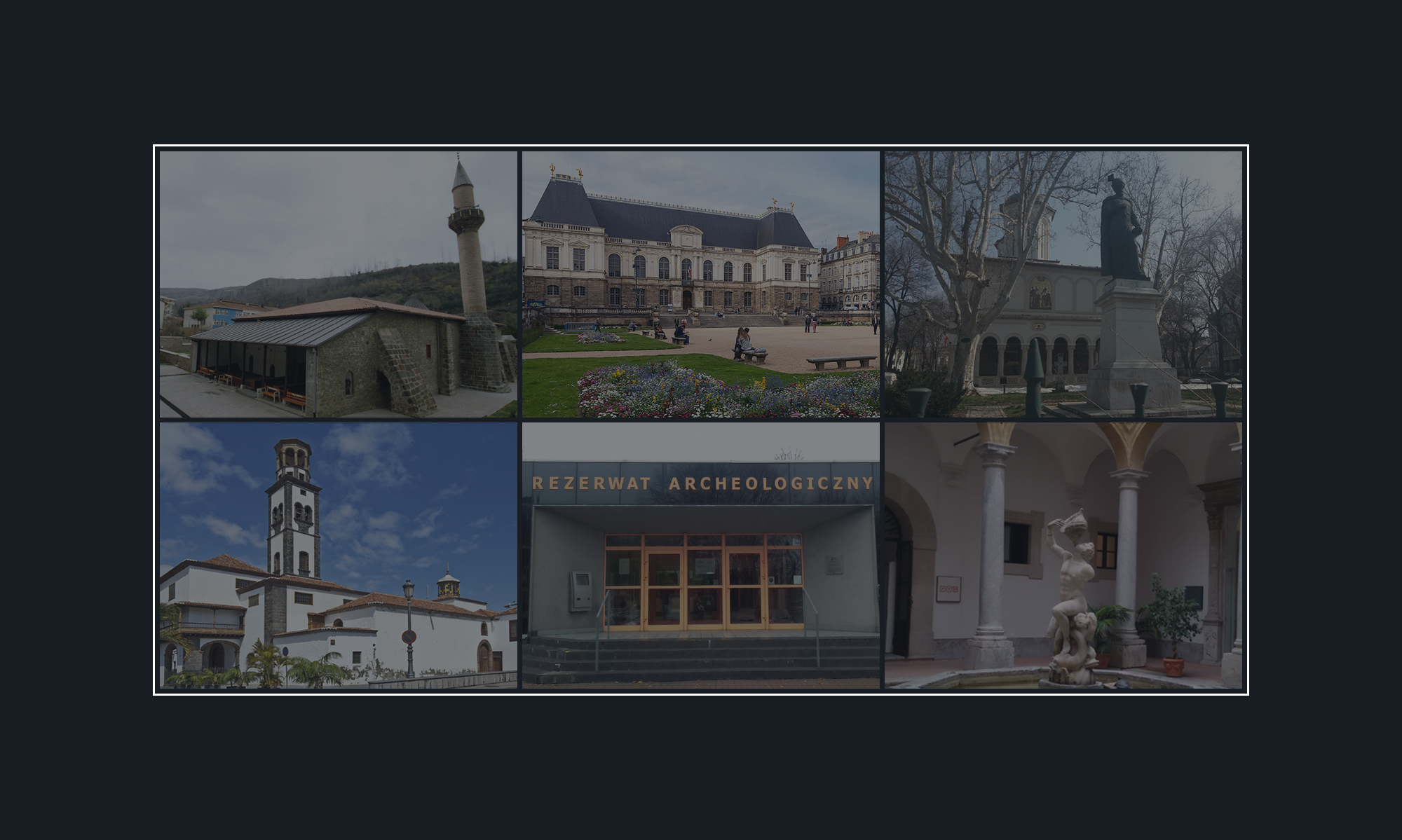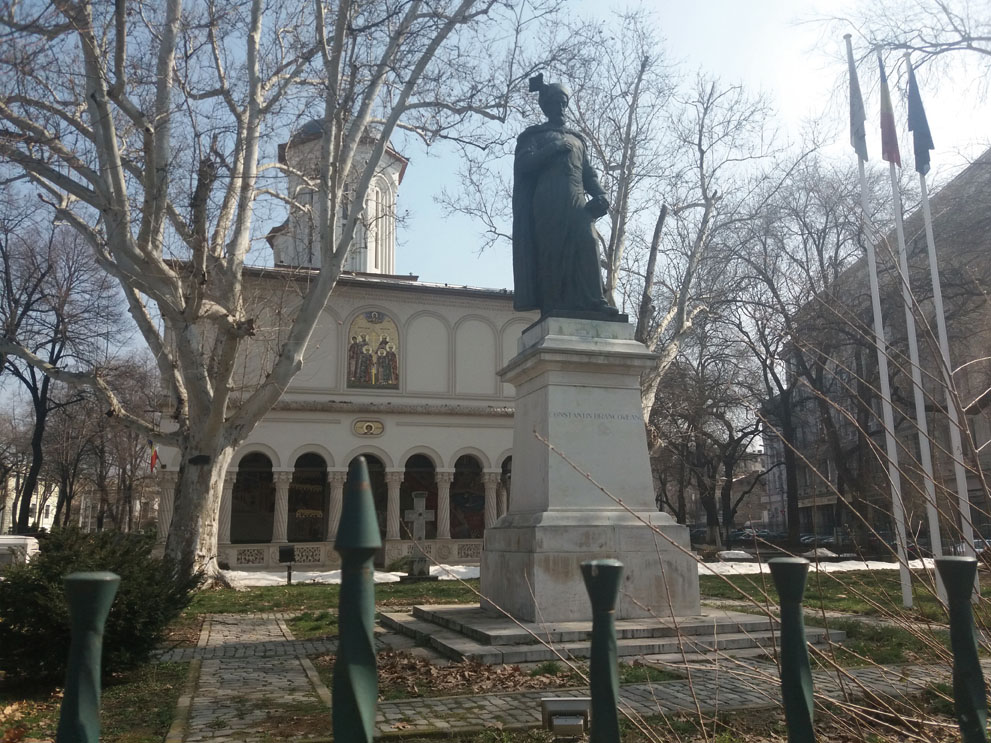L’Église Saint Georges Nouveau
L’Eglise « Saint Georges Nouveau » se trouve à Bucarest, sur la rue Lipscani, mais de l’autre côté du boulevard Bratianu, qu’on traverse par un passage souterrain. Considérée comme l’un des plus beaux exemples de l’architecture orthodoxe à Bucarest, elle fut construite par Constantin Brâncoveanu (1688- 1714). Sept ans après l’inauguration de l’église (1707), le prince Brâncoveanu fut capturé par les Turcs, qui l’emmenèrent avec ses fils à Istanbul où ils furent tous décapités. Sa femme ramena sa dépouille à Bucarest et l’enterra dans cette église, où l’on peut voir sa tombe. Détruite par un incendie en 1847, l’église fut reconstruite en 1853.
Dans la cour de l’église il y avait en 1830 la première librairie roumaine appartenant à Iosif Romanov, qui a eu un grand rôle dans la réalisation de la solidarité culturelle et spirituelle des Roumains, un souhait du testament du grand voïvode Constantin Brancoveanu.
Tout au long de son histoire, de célèbres archéologues ont établi que l’église a été premièrement construite en bois, avec sur une base faite des pierres de rivière un siècle avant, c’est-à-dire XVème siècle. Le chroniqueur Radu Greceanu a défini en tant que constructeur Dobruș Banul .
Des documents historiques de la fin du XVIème siècle rappellent de cette église renommée par les reliques qu’elle garde. Ici on trouve une partie de la main droite du Saint Nicolas de Myra. Les reliques ont été données à cette église par le voïvode de la Valachie, Mihail le Brave qui la reçu à son tour du cardinal de Bari comme signe de valorisation de ses victoires contre les païens. Le corps se trouve à Bari et un bras au Nord Est de la France.
« …la main droite du Saint Nicolae, archevêque de Myra Lichy, couverte en argent pure, décorée des pierres précieuses, offerte par moi, Mihail Voïvode (le Brave) et la dame Stanca, en 7407 (1599), préfet (étant) le métropolite Eftimie».
Pendant le règne d’Antonie Voïvode (1669-1672) il y a de nouvelles aussi de l’Eglise Saint Georges de Bucarest en 1625 qui a suivi lors de sa construction le modèle de l’église de la Colline Stenimachos, de l’Ile Halki de Grèce. Mais comme la capitale commence s’agglomérée, l’église reste toujours trop petite pour les gens qui passent son seuil. Alors il faut toujours la modifier.
C’est comme ça que l’Eglise dans sa forme actuelle a été reconstruite à l’ordre du Voïvode Constantin Brancoveanu. A cet édifice a apporté sa contribution l’architecte Veseleil qui a fait le projet et la construction de l’église, l’aga Enache Văcarescu, comme préfet et le peintre Pârvu Mutu. La réalisation de l’édifice sacré le 29 juin 1707 a été un événement extraordinaire, enregistré dans les chroniques avec tous les détails.
En 1802 il y a eu un grand tremblement de terre et l’église a été très avariée. Un autre tremblement de terre a été en 1804 et après elle subit aussi un grand incendie. Elle a été restaurée et en 1838 elle doit supporter encore un tremblement de terre. Le 23 mars 1847 un grand incendie allait dévaster toute la capitale et on allait perdre beaucoup de documents et les bâtiments qui l’entourent. Les débris vont lever le niveau du terrain avec 1,8 mètre par rapport au niveau de la ville de l’année 1707.
Dans ce contexte, il y a eu lieu un concours pour choisir l’architecte du nouveau bâtiment. C’était Xavier Villacrosse Aîne celui qui a gagné et qui a réalisé un bâtiment tout à fait différent par rapport à la forme initiale, c’est pourquoi à présent l’église s’appelle “Saint Georges Nouveau”.
En 1940 et 1977 l’église a été terriblement dégradée, mais comme elle était un monument chargé d’histoire, on a décidé de la reconstruire en suivant les plans d’architecture du temps du voïvode Constantin Brâncoveanu, travaux finalisés en 1986.
Les peintures ont été renouvelées en 2010 et le mobilier refait en tenant compte du style de Brâncoveanu.
Au-dessus du tombeau du Voïvode Constantin Brâncoveanu, sa femme, la Dame Maria Brancoveanu a ajouté une chandelle en argent sur laquelle elle a précisé la place des reliques du voïvode. La chandelle a été gardée la plus part du temps dans le Musée de l’Histoire Nationale et elle a été aussi restaurée.
Dans cette église il y a aussi une icône qui fait des merveilles, l’icône de la Sainte Parascheva, réalisée en bronze, datant du XVIIIe siècle et restaurée aussi en 2008.


